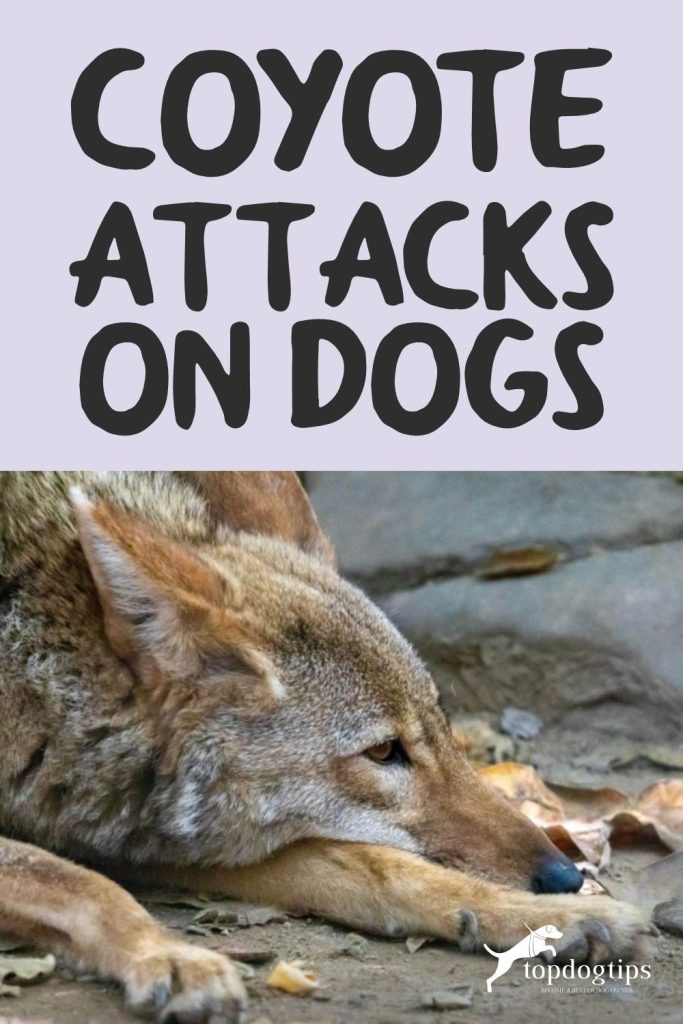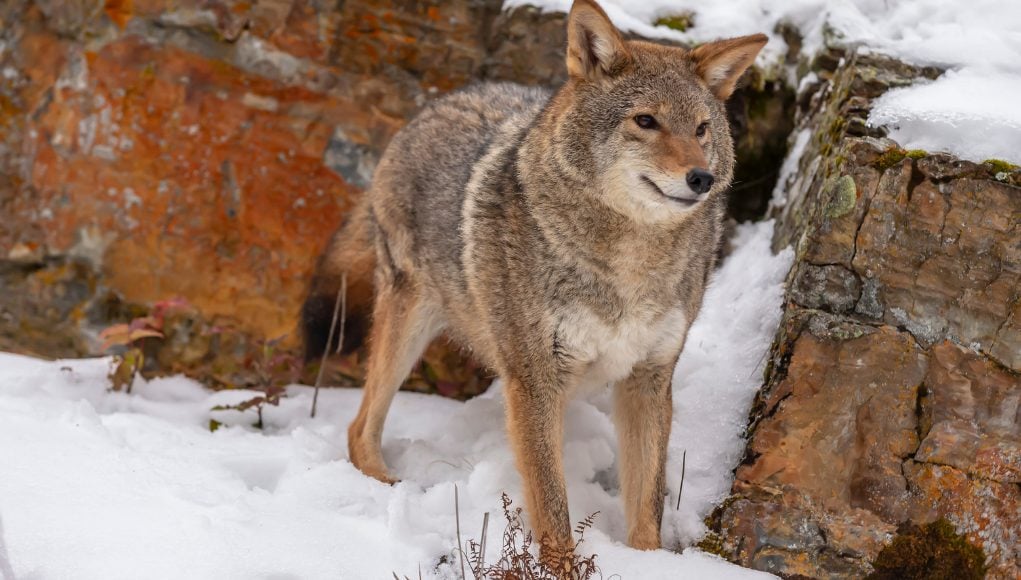When we talk about possible coyote attacks or sightings around the area, humans particularly fear their lives. Yet, this is not always the case.
Table of Contents
- The Coyote
- Coyote Attacks on Dogs
- Potential Causes of Coyote Attacks
- What to Do to Avoid Coyotes Attacking your Dogs
- 1. Avoid Feeding Coyotes
- 2. Erect Fences Around Your Front and Back Yards
- 3. Utilize Outdoor Lights
- 4. Don’t Leave Out Food or Garbage Outside Your House
- 5. Avoid Places That Coyotes Might Hide In
- 6. Watch Your Dog When Outside At All Times
- 7. Keep Your Pooch On Their Leash When Outdoors
- 8. Intimidate An Approaching Coyote As Much As You Can
- 9. Clean Your Yard And Make Them Coyote-Proof
- 10. Practice Coyote Hazing
- What if My Dog Gets Attacked?
- Conclusion
Aside from the possible damage to properties, humans also fear the possibility of coyotes attacking their pets.
These creatures are apparent within the continent of North America. They are nocturnal, come in packs, and don’t settle in one place; they roam around to search for food.
Coyote sightings and attacks are not common in urban or suburban areas. As humans begin to settle on usual coyote habitats, it has become a possibility that they lurk somewhere near your homes.
Listed below are the things you might not want to miss in identifying and preventing coyote attacks within your vicinity.
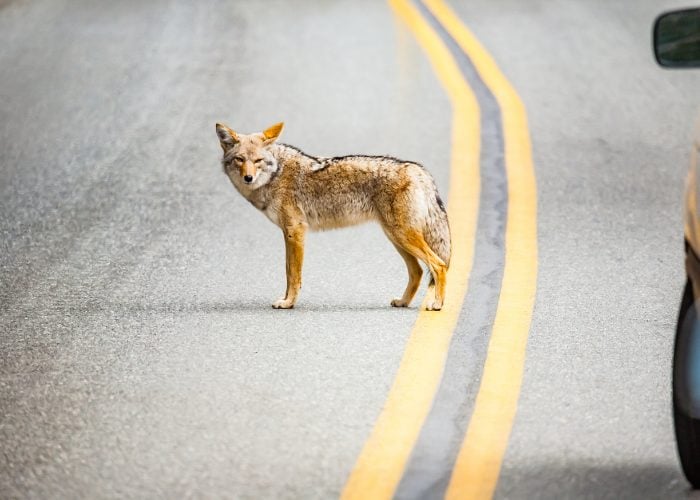
The Coyote
Coyotes are wild dogs that closely resemble a skinny version of a German Shepherd. They have broad, pointed ears, yellow eyes, and are usually gray in fur.
Once inhabitants of the Western United States, they now live around Alaska, Central America, Atlantic Provinces, and the Southeastern United States.
These creatures use a variety of signals and sound to communicate with one another. They could be barking, howling, or growling for various reasons.
They're opportunistic and may switch from habitat to habitat at any time. Thus, coyote sightings and conflicts are seen frequently because of the coyote's ability to adapt to artificial surroundings and communities.
They are also highly intelligent scavengers who look for ways to survive. Their diet revolves around rodents, small animals, birds, and even whatever they can find in the garbage.
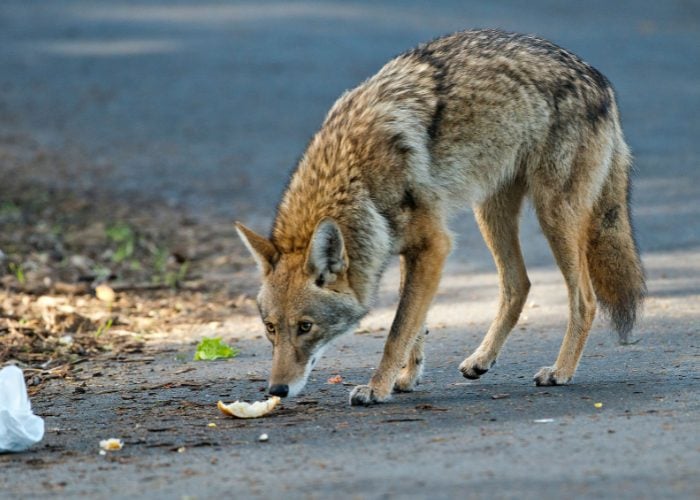
Coyote Attacks on Dogs
Potential coyote attacks do not happen simultaneously. There are only two human deaths in the attacks recorded; the first is in 1980, while the latest was in 2009.
The 1980 attack was the only recorded coyote attack of a child, Kelly Keen, who suffered from fatal injuries after being dragged by a coyote. Unfortunately, she ended up dying after being taken to the hospital.
Last 2009, singer-songwriter Taylor Mitchell was attacked by a pack of coyotes while taking a walk in a park in Nova Scotia. She died due to significant blood loss while undergoing surgery.
On the other hand, although human attacks rarely occur, this is not the same for your canine friends.
More often than not, it's usually the smaller breeds that get targeted by coyote attacks because larger dogs are twice the size of coyotes. Thus, when the latter gets attacked, it's usually done by two or more coyotes.
The reason for this is unknown, but experts believed that coyotes get intimidated by dogs. Therefore, the attacks.
Coyote attacks are prevalent during winter and rare during the spring and summer months because this is their mating season.
A study indicates that since 2005, coyote attacks involving dogs have been as high as 6 to 12 dogs per year. In Chicago, they have recorded at least 70 coyote attacks.
Recorded dog breeds included in the attacks are Yorkshire Terriers and Shih Tzus, with a minimum of six episodes. They are followed by Jack Russel Terriers and Labrador Retrievers, who were charged at least five times. Poodles and Boxers are on the list as well, which gets tackled four times each.
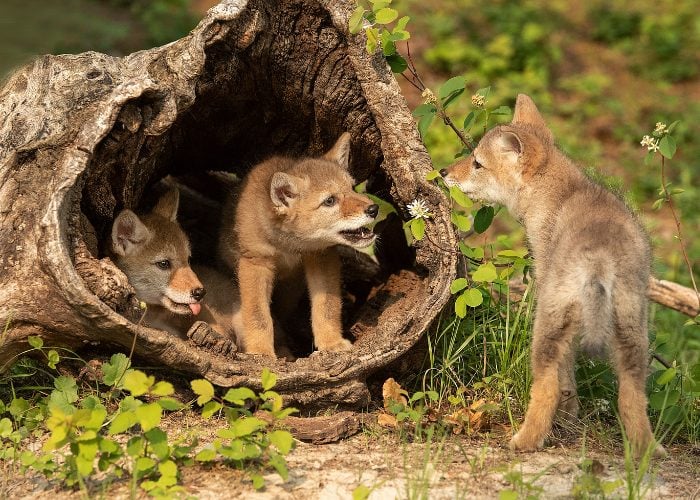
Potential Causes of Coyote Attacks
It is essential to remember that coyote attacks may always happen anytime, anywhere, even if it’s a rare occurrence.
Although barely seen, coyotes lurk at nighttime to attempt to find food they could eat. They’d go to wherever they smell food within, even if it’s in the trash, which they may consider a feast.
Attacks are slowly becoming common mainly because more coyote habitats turn into human settlements.
Below are the few possible reasons that trigger a coyote’s possible attacking tendencies.
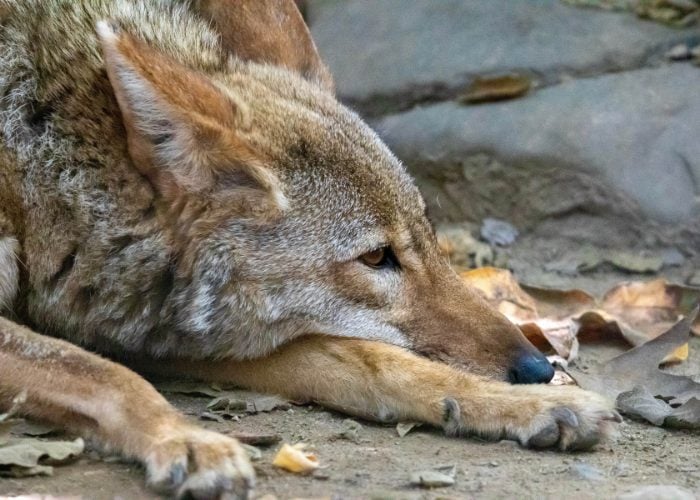
1. No Fear of Humans
Nowadays, coyotes' fear of humans is gradually getting weaker.
They are getting more fearless as they move into suburban neighborhoods to feed their empty stomachs. As time goes by, they have also started to chase down passersby and even children.
A coyote that does not run away upon sensing a human means they have grown accustomed to them. When these creatures depend on food handouts to eat, they slowly turn demanding and aggressive.
They might see domesticated dogs as opponents for what the human feeds and may attack them at any given point.
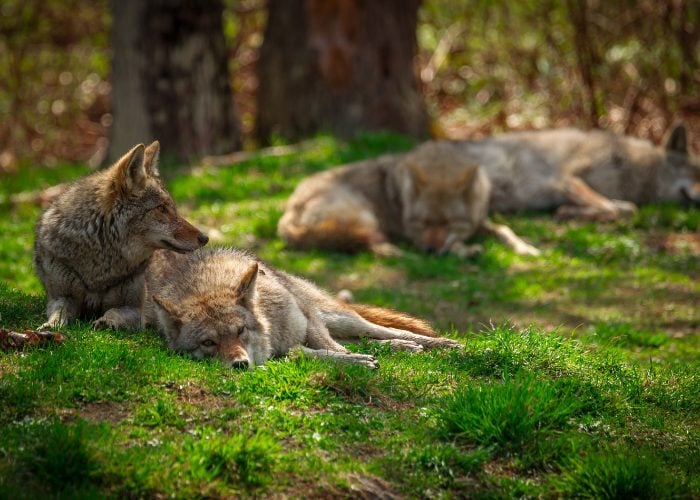
2. Territorial Protection
As mentioned earlier, springtime is the coyotes’ mating season. During this season, their increased protectiveness within their pack will make them aggressive towards predators.
They mark their territory with howling as a form of communication and scent-marking to solidify their claim.
The aggressiveness will also extend towards anyone they consider a potential threat to their newborn litter and territory.
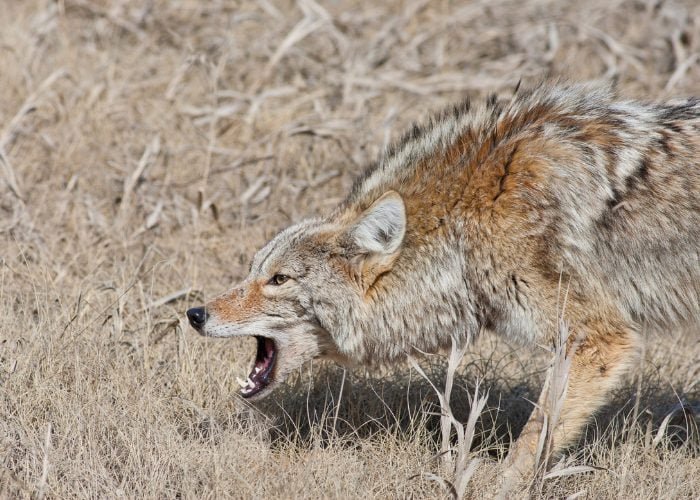
3. Defense Mechanism-based Coyote Attacks
Although coyotes usually strike back if provoked, they run back to their pack's den as a defense mechanism, especially when they feel unsafe.
You will identify a coyote in its defense position when it's in its “Halloween cat” pose. Their back would arch, and their tail may curl down in their defensive mode in an attempt to scare upcoming threats.
Canids coming in packs usually consist of an alpha male and female pair. A lone coyote is capable of attacking if provoked, especially if they're trying to defend themselves.
However, more often than not, they would instead leave the vicinity rather than fight something not worth fighting for them.
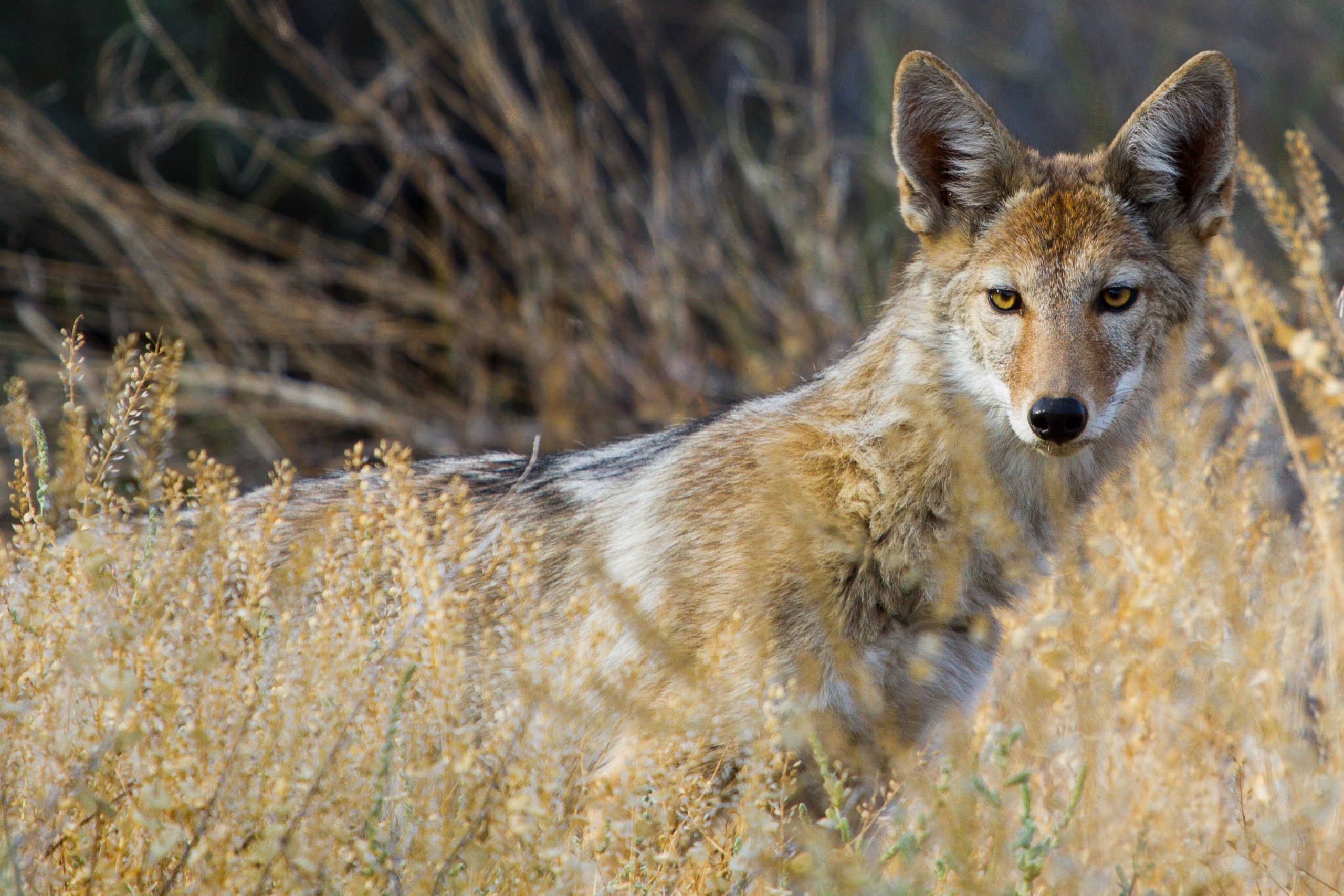
4. Investigative Coyote Attacks
Coyotes are naturally curious.
Everything seems so peculiar to them, especially if it's something that piques their interest. Thus, coyotes are likely to paw or bite on something they stumble on.
So, when a coyote sees you or your dog walking freely on the street, they will likely bite you out of curiosity.
However, coyotes have rabies, so you must still be careful.
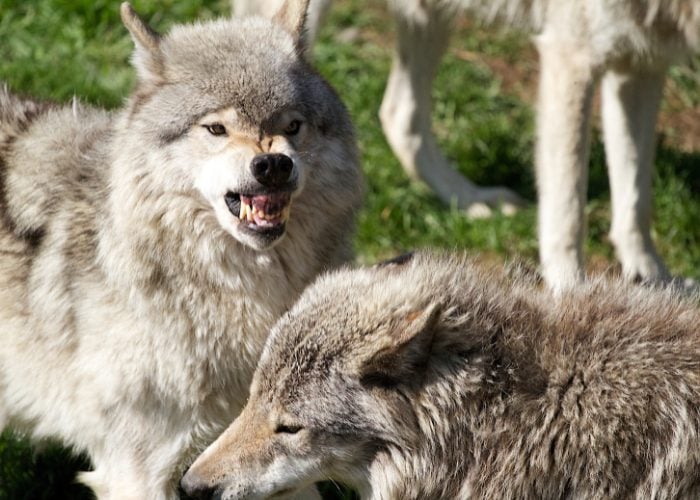
Rabid-related attacks specifically happen when a coyote is actively showing signs of rabies and attempting to fight back.
It usually happens when they are in a panic while being hunted or caught. Dogs bitten by rabid canids will significantly contract rabies.
To identify a rabid attack by a coyote, they must be showcasing abnormality in their body movements. They are likely to be abnormally tame, or their mouths are frothing with saliva.
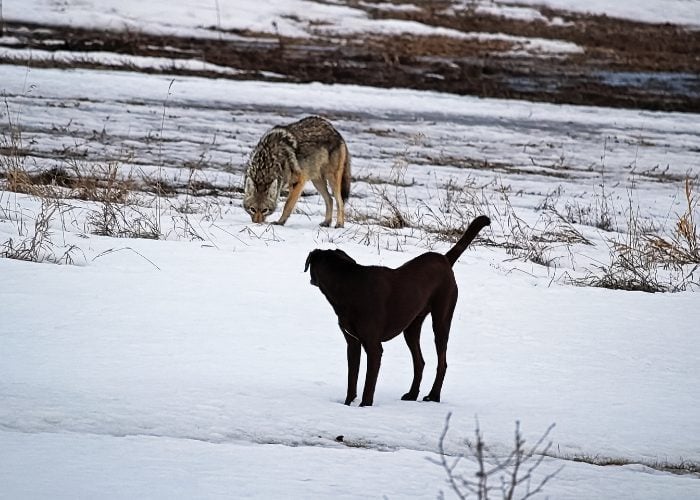
Pet-related attacks happen for various reasons.
For example, your pet may encounter a coyote if they closely catch their sight or scent. More often than not, strays or lost puppies are the victims.
Another instance that’s possible is any dog that may happen to be around at a time of a coyote attack. In this case, the dog becomes a casualty within the scene that’s happening at that moment.
A pet-related attack may happen if the coyote views the dog as a potential threat to their pack if it’s near their area.
These potential occurrences happen while the coyotes are in hiding and are ready to pounce. In these cases, it's best to move away from a possible area inhabited by coyotes.
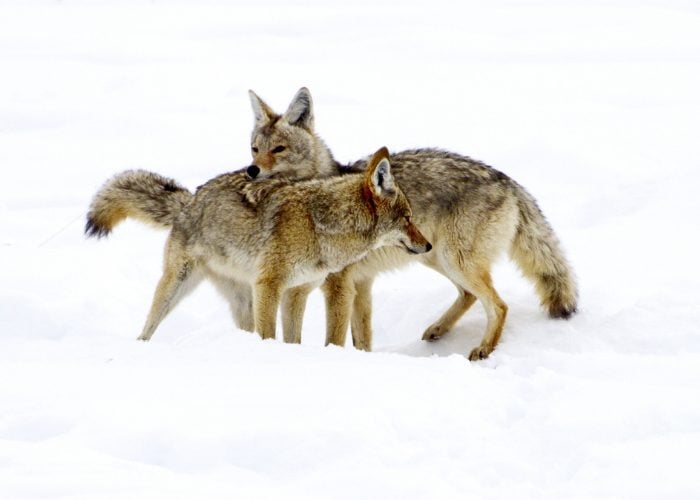
Although rare, canines and canids can mate because of their closely similar genetic patterns. However, even though our dogs are domesticated, they are the one who takes the initiative to invite a mating between them.
A possibility of a mating-related attack may happen if the coyote takes the dog near their territory. If this happens, the coyote’s pack may take the opportunity to pounce and attack the canine.
It does not frequently happen, but there are instances that people witness sightings of coyote-dog offsprings. However, their offspring are likely to be impotent or infertile.
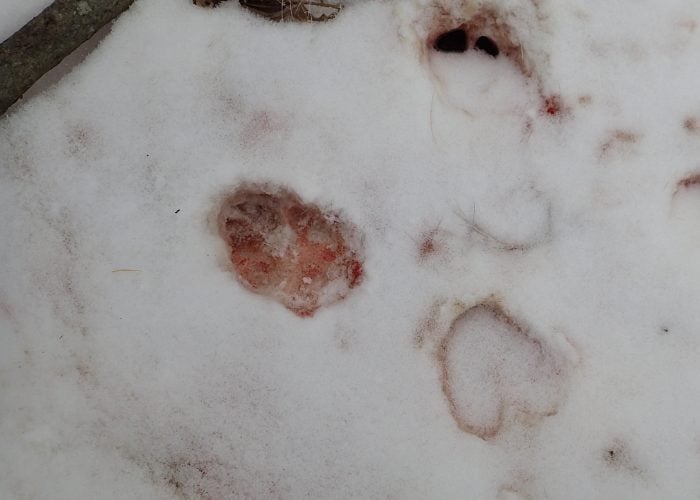
8. Predatory Coyote Attacks
Predatory attacks are likely to happen when coyotes are at a threat for survival and safety. When they’re hungry, they mainly strike on small dog breeds they can easily feed on.
As coyotes mainly kill for survival, they are quick and agile as they initiate the attack. However, either the victim’s life will end, or their body is torn limb-by-limb due to fatal injuries.
Remnants of predatory coyote attacks, if successful, are always close or piled on top of one another. If they’re unsuccessful, however, they will attempt to intimidate humans who are about to help the victim.
What to Do to Avoid Coyotes Attacking your Dogs
Fortunately, even if there are instances that coyotes cannot stop themselves from pursuing your dogs, there are solutions to avoid them.
These solutions serve more as a precaution to avoid any casualties or attacks happening to you and your furry friends.
Here are some examples of what you can do to steer your puppies away from harm. It is practical, especially in the case there are coyote sightings near you!
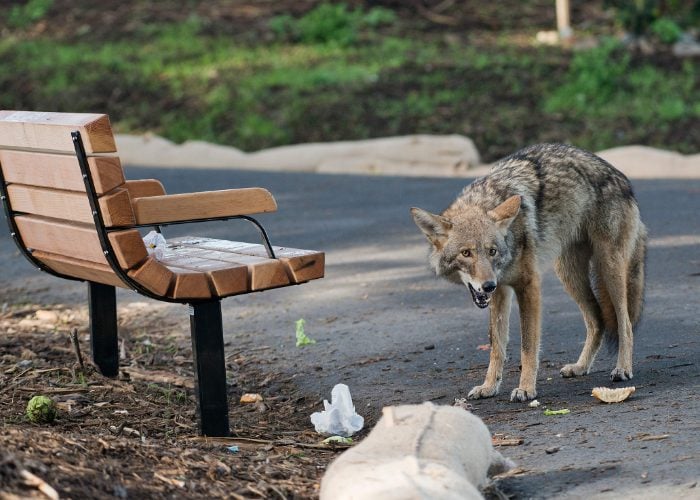
1. Avoid Feeding Coyotes
“Do not feed coyotes” is number one on this what-to-do list.
Food is something that tames coyotes, but feeding coyotes amplifies their hostility towards humans, especially when they fail to get food from you.
Furthermore, it also makes coyotes view domesticated pooches as a potential threat for them when collecting food.
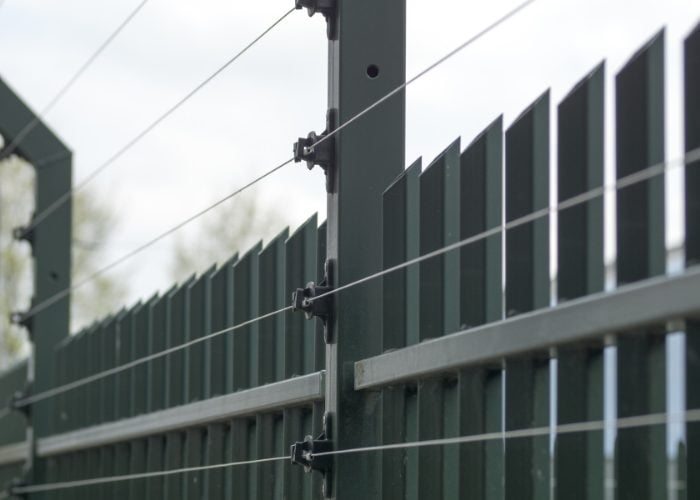
2. Erect Fences Around Your Front and Back Yards
To clarify, erecting fences around your yard does not entirely stop an occasion of a coyote attack, but you can prevent them.
However, coyotes can jump or dig under them, so it’s your choice to add electric fences for extra safety.
You may install durable fences like chain-link fences so that you have a way of seeing if there’s any coyote around. This type of fence may help you barricade the canids, so they have no way of reaching you and your canines.
Other effective fences that you may install are PVC pipes, chicken wires, or barbed wires on top of your regular fences for extra protection.
You could also install a coyote fence, a heavy steel mesh fence you can build deep in the ground so they can’t dig in.
Speaking of digging, install your fences about 12 to 18 inches deep, or make a digging barrier around your area.
Furthermore, bear in mind that it must be at least 6 feet tall when you establish a fence since, aside from digging, coyotes can quickly jump onto anything shorter.
Not only will you protect yourselves behind these fences, but you’ll ensure that daily playtimes with your puppy will be extra safe.

3. Utilize Outdoor Lights
There’s a practical reason why coyotes only roam around at night, and it’s because they don’t do well with light sources.
There are many outdoor lights available—you can even get a motion detector light to detect any movement in your yard.
You may also purchase a flashlight or spotlight if you want them extra. These items are usable in scaring the coyotes off your yard or lawn.

4. Don’t Leave Out Food or Garbage Outside Your House
Leaving out your food or garbage outside the house is a bad practice, especially if you tend to have leftover food or scraps that might attract coyotes.
Remember that coyotes are scavengers that can navigate in the trash to find food that they can eat.
If you cannot seem to avoid this, you may put the garbage in an area where you can chase them away.
You may also bury biodegradable items on your lawn or recycle any recyclable materials to lessen the waste thrown in your garbage area.

5. Avoid Places That Coyotes Might Hide In
If you're planning to take a walk with your dog, make sure not to do it at night time. Coyotes are nocturnal animals; thus, they will frequently attack more at night.
Furthermore, I suggest not to walk with Fido in areas that seem like they could be hiding places for coyotes.
Coyotes like to hide in shrubberies and wooden patches in urban areas, making them invisible to people.
You may not see coyotes hiding in commercialized regions since they would rather hide within natural places.
If you have these potential hiding spots on your property, make sure they're maintained so there wouldn't be a spot they could hide.
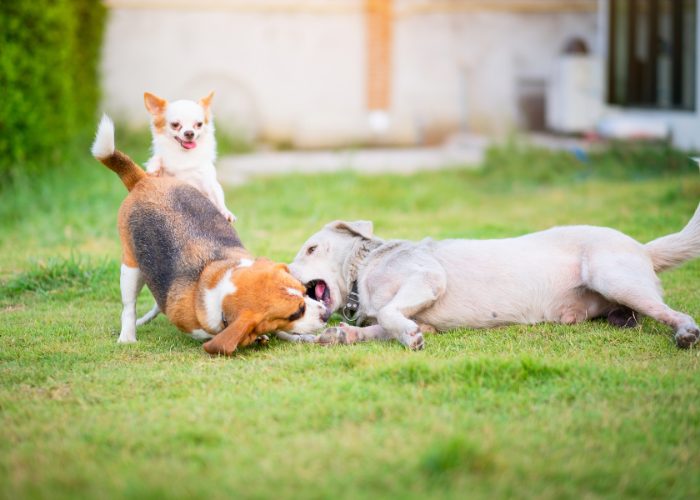
6. Watch Your Dog When Outside At All Times
It’s essential to know your dog’s whereabouts whenever you take them outside your yard, even if it’s to play.
You wouldn’t know if a coyote’s going to make their surprise attack without your watchful eye.
In this case, you may sit outside on your porch while Fido is having fun out to keep them safe. It’s also best to bring a flashlight or megaphone with you for an easy coyote scare.
Furthermore, because of their similar genetic structure, dogs and coyotes may attempt to mate as well.
Monitor your furry friends since they’re the ones who initiate the mating more often than the coyotes.
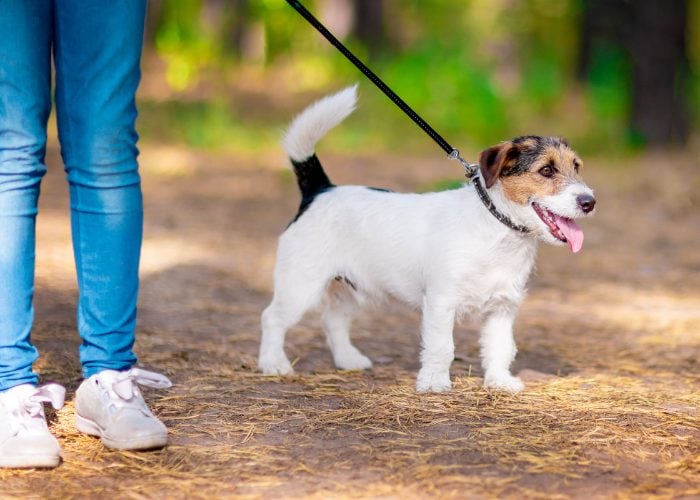
7. Keep Your Pooch On Their Leash When Outdoors
You'll want to keep a close eye and a grip on your canine wherever you go in case of coyote sightings. Even if your dog's well-behaved, you cannot foresee a coyote attack.
Furthermore, you also don't know how your dog will react to dangerous stimuli like coyote appearances.
Thus, it would be best if you keep them close whenever you and your pet take a walk to ensure both of your safety.
If you see coyotes around somewhere, gently pull yourself and your dog away from the area.
Do not ever rely on retractable leashes in this case because they can easily break and get loose.
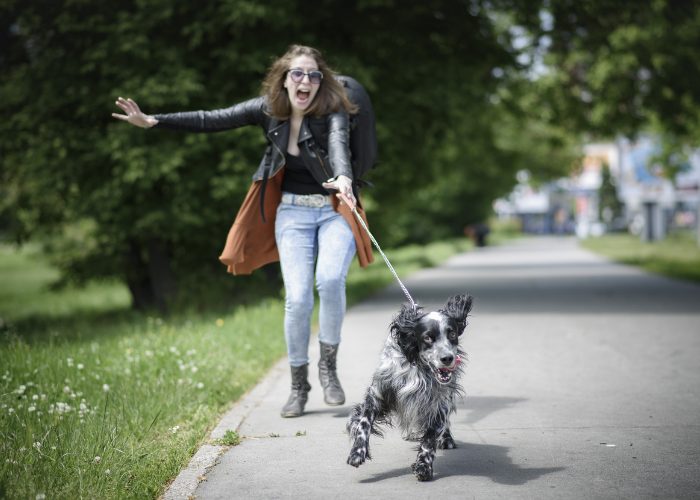
8. Intimidate An Approaching Coyote As Much As You Can
Be big, be brave, be loud—you’ll have to scare off a coyote until they scramble off and away from you.
Don’t show any fear in your movements because it’s them that you’ll have to intimidate, not the other way around.
Back off slowly as much as possible, and pick up or pull your puppy away from them. Use your flashlight if you have it at hand; it’ll be effective in scaring the coyotes off.
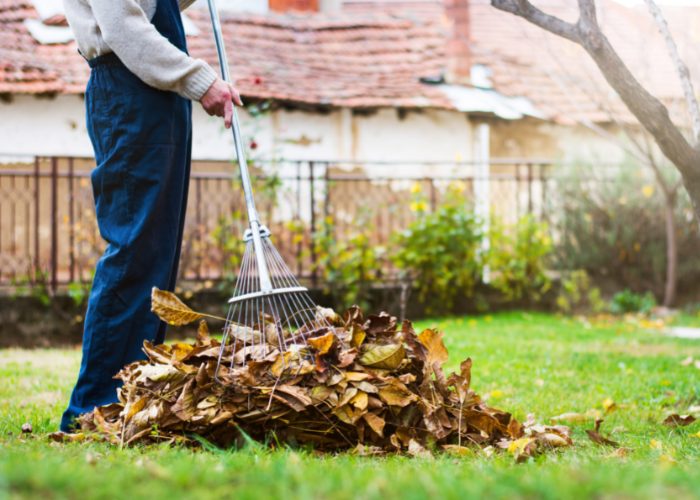
9. Clean Your Yard And Make Them Coyote-Proof
Did you know that dog poop, in itself, attracts coyotes because of the food they ingest? Anything that smells like secretions may lure a coyote, or even a pack of them, into your property.
You may start cleaning your yard up of anything that your dog might’ve left. Residues or even fallen fruit can tempt a canid into your area, so you must clean them up.
Another effective way of letting coyotes out of your yard is by marking the area with wolf urine. Wolves are considered predators to coyotes and can make them stay out of your vicinity.
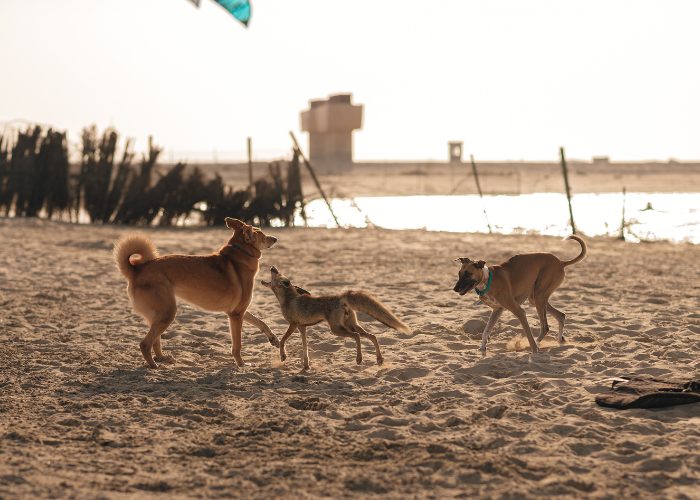
10. Practice Coyote Hazing
Coyotes have lost their fear of humans and domesticated dogs because of various reasons. As a result, hazing has become a suggested practice in households that coyotes frequently visit.
Hazing is an act of inflicting physical or psychological trauma to the coyotes to intimidate them from causing trouble in the neighborhood.
Although this act itself deters the creature into submission and fear, it does not mean that you are entitled to harm them brutally.
It is okay to use hazing to intimidate coyotes, but there are more alternatives than just beating them fatally.
Furthermore, hurting a coyote does not do anything. You’ll only have to scare them off by making loud sounds, appear as if you’re bigger, and even throw pebbles to shoo them away.
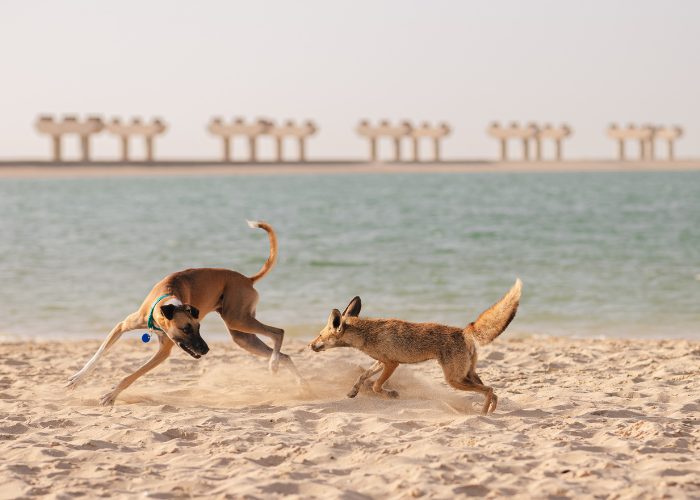
What if My Dog Gets Attacked?
Coyotes are ferocious animals even with their lean stature; thus, your dog is likely a no-match against them. Consequently, there are high instances that coyote attacks are unavoidable.
If your dog suffers a bite, immediately contact a veterinarian. Quickly monitor their vital signs before checking the area of their wound.
Never, in any way, attempt to treat their wounds, but if heavy blood flow is present, you may apply pressure.
You may use a cloth and wrap the most afflicted area down, and you can do this unless the bite is rabid.
If you have witnessed the attack, carefully describe it to the veterinarian so that they can check the other areas that are affected.
However, if you missed the said crime, make sure to remind the veterinarian about it.
However, they will likely treat the wound of the bite by cleaning and starting antibiotics. If required, they may also administer a rabies vaccine if the coyote found is rabid or tests say it's positive.
Medication will likely be extensive, especially when the coyote bite is fatal to the pup.
On the other hand, dogs quickly recover from head injuries, especially concussions, but you will have to bring them to the vet to check.
They might suffer from internal bleeding and other potential conditions that may affect their brain.
If they suffer from bone-related accidents such as a fracture, you may want to avoid attempting to treat them and bring them as an emergency to your vet.
Don’t attempt first aid, like disinfecting and adding antiseptic, as this may worsen their condition rather than heal them.
Conclusion
If compared to fairy tales, coyotes are like the Big Bad Wolf in our modern world. However, unlike fairytales, coyote attacks are true.
If you’ve been living in your area for a long time now, you must have known if coyote attacks are frequent or not.
However, if you are still new to the neighborhood, you must study the area carefully and do coyote research around it.
Whether a coyote in your area is possible or not, you must always be careful and alert to protect yourself, your family, and your Fido.
There are different ways on how to handle a coyote. And its effectiveness depends on how you present them. Thus, knowing preventive measures is a must.
Stay safe! Better be secure and knowledgeable than sorry.
READ NEXT: Snake Avoidance Training for Dogs
